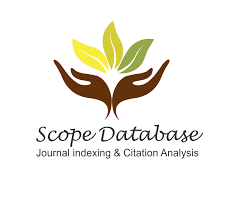Details
Economic Aspects of Organic Farming
Poornima Chaudhary
Mount Carmel School, New Delhi
Download PDF http://doi.org/10.37648/ijrst.v12i02.008
http://doi.org/10.37648/ijrst.v12i02.008
Abstract
This article examines the economic and environmental factors unique to tiny, landless, and marginal farmers, and then suggests ways in which such farmers might increase their income via the practice of organic farming. The majority of farmers are economically marginalized, making it unrealistic to expect them to invest in large quantities of fertilizers and chemicals, thus they must turn to organic practises instead. And for the many individuals who own just a few acres of farmland, organic farming is a great option. The Fair-Trade Alliance of Kerala (FTAK) is a group of local farmers with the goal of expanding their access to the international fair-trade market. In comparison to the free market, the method results in lower prices for goods, which is good news for fair trade exporters. By analysing FTAK, this study highlights its positive effects on income and highlights the importance of the growing organic food industry, premium pricing, and incentives for farmers. According to the findings, organic farming is a more effective way to increase Indian farmers' income by 20-50%, and that fair trade farmers received higher prices (20-50%) for their commodities when selling them directly to international buyers.
Keywords: Organic farming; Agriculture; economic; Economic Aspects
References
- Susanna Kujala et.al “Factors affecting the regional distribution of organic farming†Journal of Rural Studies Volume 92, May 2022, Pages 226-236
- Ivan Tsvetkov et.al “Plant organic farming research – current status and opportunities for future development†Biotechnology & Biotechnological Equipment, 2018 VOL. 32, NO. 2, 241–260 https://doi.org/10.1080/13102818.2018.1427509
- M. Manjula et.al “Organic Farming in India: Catalysts that Can Help in Transition†Ecology, Economy and Society–the INSEE Journal4(1): 21–29, January 2021
- Mr. M. Elayaraja, Dr. C. Vijai et.al “Organic farming in India: Benefits and Challenges†European Journal of Molecular & Clinical Medicine ISSN 2515-8260 Volume 7, Issue 11, 2020
- Muhammad Waqar Akram et.al “Investigating the leading drivers of organic farming: A survival analysis†Ciência Rural, Santa Maria, v.52:7, e20200781, 2022 Received 08.21.20 Approved 06.30.21 Returned by the author 10.27.21 CR-2020-0781.R2 Editors: Leandro Souza da Silva Vicente Celestino Pires Silveira http://doi.org/10.1590/0103-8478cr20200781
- Brusko, Mike, George, De Vault, Fred, Zahradnik, Craig, Cramer and Lesa, Ayers (1985) Profitable Farming Now. The Regenerative Agriculture Association, Emmaus, Pa,USA.
- Brusko, Mike, George, De Vault, Fred, Zahradnik, Craig, Cramer and Lesa, Ayers (1985) Profitable Farming Now. The Regenerative Agriculture Association, Emmaus, Pa,USA.
- Letourneau, D.K. and Goldstein, B. (2001) Pest damage and arthropod community structure in organic vs conventional tomato production in California, Journal of Applied Ecology, 38(3):557-570.
- Eberle, P. and Holland, D. (1979) Comparing organic and conventional grain farms in Washington. Tilth (Spring): 30-37.
- Eberle, P. and Holland, D. (1979) Comparing organic and conventional grain farms in Washington. Tilth (Spring): 30-37.
- Seligova M. (2017): The effect of selected financial indicators on liquidity of companies in selected sectors in the Czech Republic. Acta Universitatis Agriculturae et Silviculturae Mendelianae Brunensis, 65: 2095–2014.
- Urfi P., Hoffman A., Kormosne-Koch K. (2011): The comparative cost and profit analysis of organic and conventional farming. Studies in Agricultural Economics, 113: 67–84
- Myskova R., Hajek P. (2017): Comprehensive assessment of firm financial performance using financial ratios and linguistic analysis of annual reports. Journal of International Studies, 10: 96–108.
- McBride W., Greene C. (2009): Characteristics, Costs, and Issues for Organic Dairy Farming. USDA Economic Research Report No. 82. Available at https://ssrn.com/ abstract=1510179 (accessed Jan 29, 2019).
- Lori M., Symnaczik S., Mäder P., de Deyn G., Gattinger A. (2017): Organic farming enhances soil microbial abundance and activity – A meta-analysis and meta-regression. PLoS ONE, 12: e0180442.











